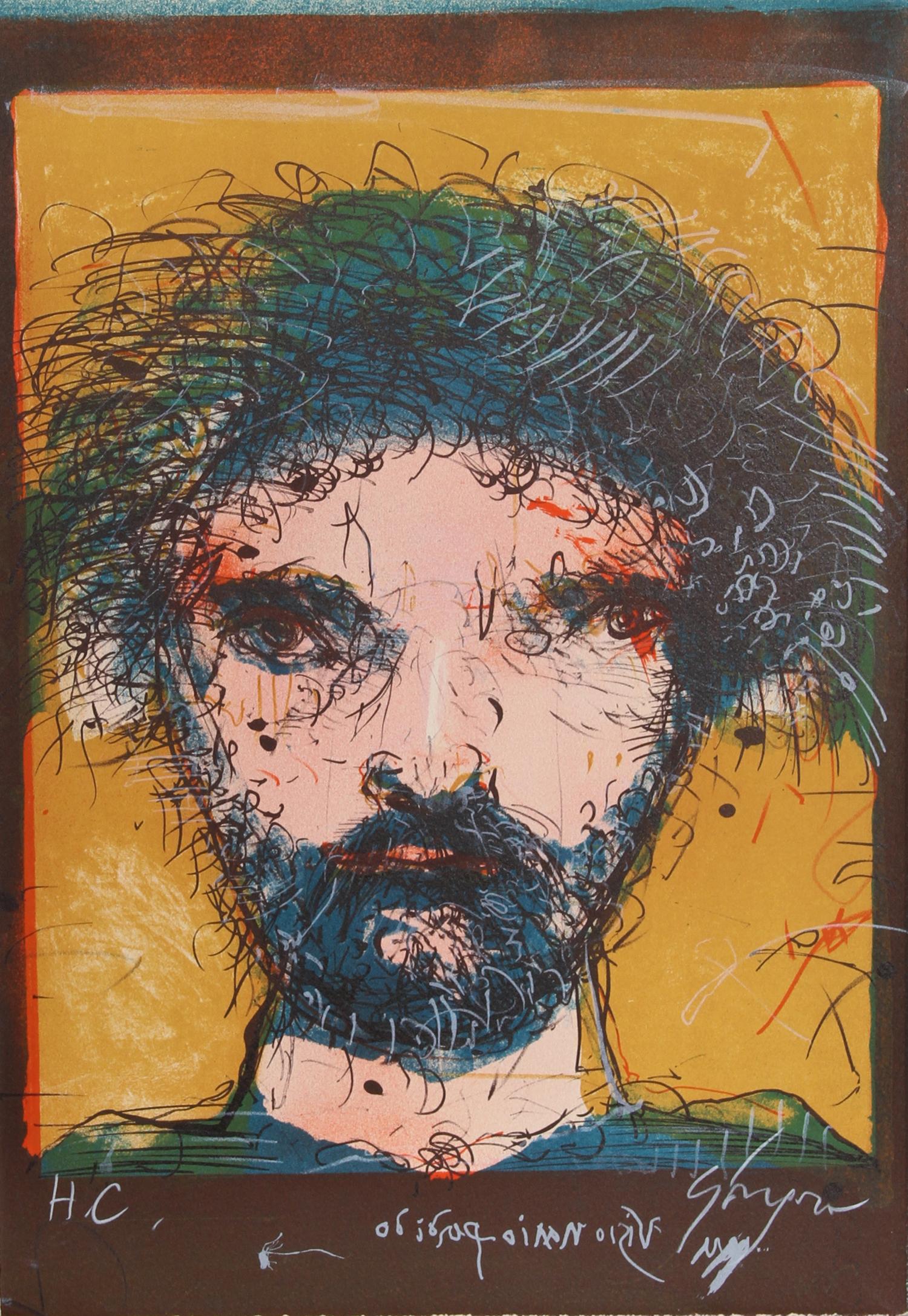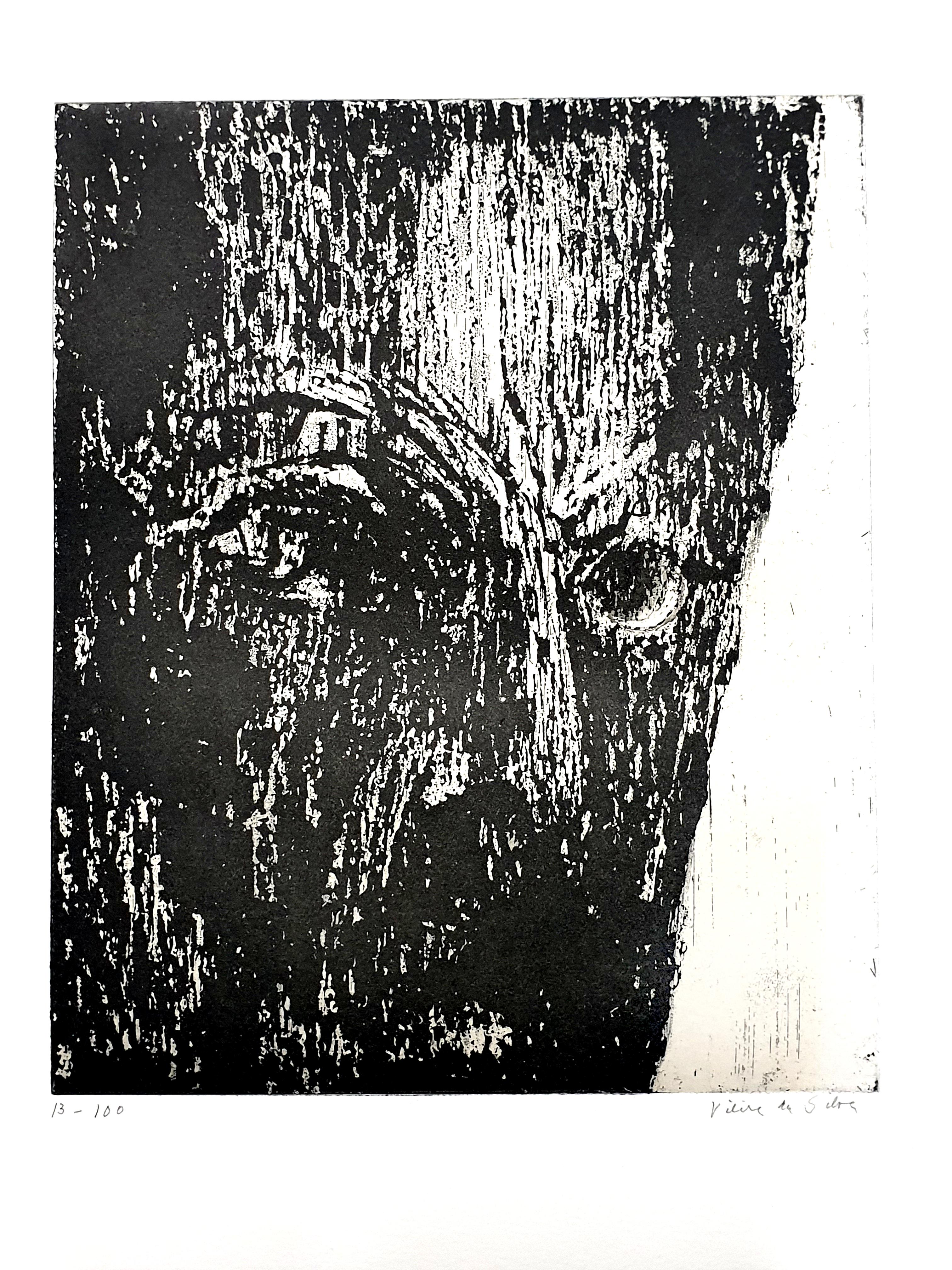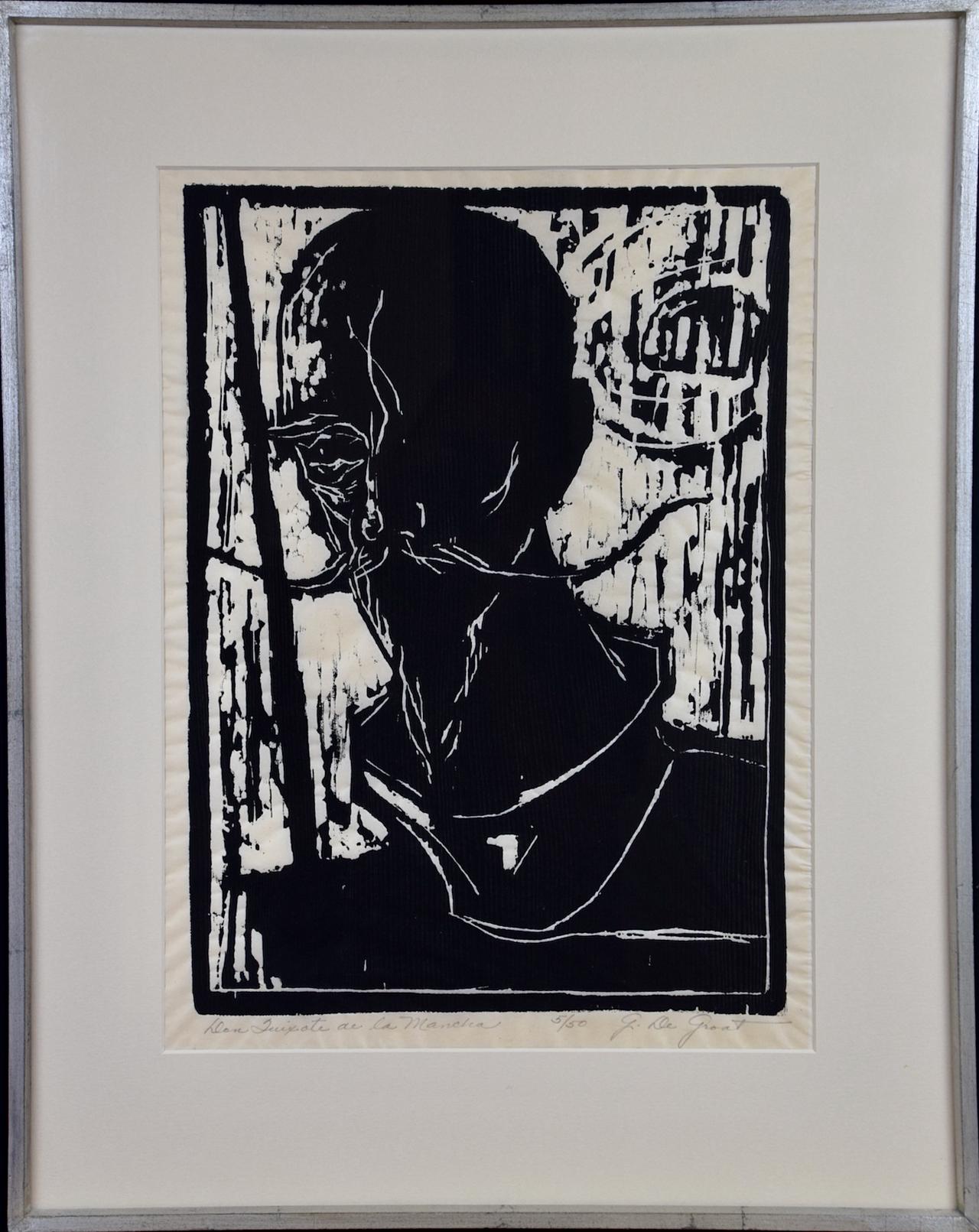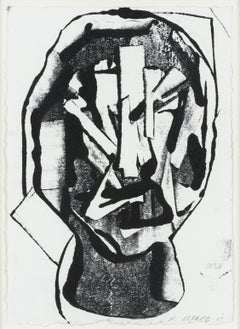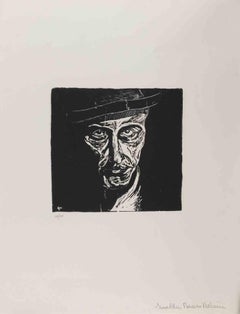Items Similar to Portrait of Modern Man - Multilayer Woodblock in Ink on Paper
Want more images or videos?
Request additional images or videos from the seller
1 of 14
Michael DowPortrait of Modern Man - Multilayer Woodblock in Ink on Paper1990
1990
$675
£512.68
€592.31
CA$946.04
A$1,058.79
CHF 552.61
MX$12,911.82
NOK 7,072.64
SEK 6,695.16
DKK 4,420.36
Shipping
Retrieving quote...The 1stDibs Promise:
Authenticity Guarantee,
Money-Back Guarantee,
24-Hour Cancellation
About the Item
Portrait of Anger - Multilayer Woodblock in Ink on Paper
Bold and saturated woodblock print of a screaming man by Michael Dow (American, 20th Century). The man is centered in this modern cityscape nightmare reminiscent of the 1993 movie Falling Down. Behind the man, there is an abstracted cityscape. Four layers of color and a section of negative space create depth in this piece. The layers are deeply pressed, leaving the impression of the wood in the paper.
Numbered "3/4" in the lower left corner.
Signed and dated in the lower right corner "Michael Dow /90"
Dedicated "for Mike from Mike CSSSA 1990" (CSSA) below the signature (hidden by mat).
Presented in a new grey mat.
Mat size: 20"H x 16"W
Paper size: 15"H x 11"W
- Creator:Michael Dow (American)
- Creation Year:1990
- Dimensions:Height: 20 in (50.8 cm)Width: 16 in (40.64 cm)Depth: 0.25 in (6.35 mm)
- Medium:
- Movement & Style:
- Period:
- Condition:Overall very good condition. Mat is new.
- Gallery Location:Soquel, CA
- Reference Number:Seller: DBH84181stDibs: LU54211822402
About the Seller
5.0
Platinum Seller
Premium sellers with a 4.7+ rating and 24-hour response times
Established in 1986
1stDibs seller since 2014
2,948 sales on 1stDibs
Typical response time: <1 hour
- ShippingRetrieving quote...Shipping from: Soquel, CA
- Return Policy
Authenticity Guarantee
In the unlikely event there’s an issue with an item’s authenticity, contact us within 1 year for a full refund. DetailsMoney-Back Guarantee
If your item is not as described, is damaged in transit, or does not arrive, contact us within 7 days for a full refund. Details24-Hour Cancellation
You have a 24-hour grace period in which to reconsider your purchase, with no questions asked.Vetted Professional Sellers
Our world-class sellers must adhere to strict standards for service and quality, maintaining the integrity of our listings.Price-Match Guarantee
If you find that a seller listed the same item for a lower price elsewhere, we’ll match it.Trusted Global Delivery
Our best-in-class carrier network provides specialized shipping options worldwide, including custom delivery.More From This Seller
View AllAbstracted Elder Portrait - Etching
By Claudette McElroy
Located in Soquel, CA
Bold, slightly abstracted etching of an elderly woman by Claudette McElroy (American, b. 1943). Signed "Claudette McElroy" in the lower right corner. Presented in a new cream mat. No...
Category
Late 20th Century Contemporary Portrait Prints
Materials
Paper, Ink, Etching
Woodblock Portrait of a Woman
Located in Soquel, CA
Bold woodblock print of a woman by J. Duffy (American, 20th Century). The subject is staring directly at the viewer, creating a compelling yet delicate composition. The ink appears t...
Category
1950s Modern Portrait Prints
Materials
Paper, Ink, Woodcut
$460 Sale Price
20% Off
"Gertrude" - Eleven Color Woodcut on Laid Rice Paper 2/45
Located in Soquel, CA
"Gertrude" - Eleven Color Woodcut on Laid Rice Paper 2/45
Portrait of a woman by artist, Dan Miller (American, b. 1928) made by layers of color in woodcuts in Miller's signature sty...
Category
1980s Contemporary Portrait Prints
Materials
Rice Paper, Laid Paper, Woodcut
Vintage Etching Abstracted Portrait of Amazing Grace
By Claudette McElroy
Located in Soquel, CA
Bold, slightly abstracted etching of an elderly woman titled "Amazing Grace" by Claudette McElroy (American, b. 1943). Signed on verso "Claudette McElroy" in the lower right corner, ...
Category
Late 20th Century Contemporary Portrait Prints
Materials
Paper, Ink, Etching
"The Engraver" Double Layer Woodblock Print
Located in Soquel, CA
Bold woodcut print by M. Sheppard (20th Century). This piece is filled with Neolithic imagery of people and animals. There are two figures that are engaged in hunting and several pre...
Category
1980s Other Art Style Figurative Prints
Materials
Paper, Ink, Woodcut
$540 Sale Price
20% Off
Face of a Woman, Figurative Abstract Pop Art Woodcut Portrait on Handmade Paper
By Paula Walzer
Located in Soquel, CA
Face of a Woman, Figurative Abstract Pop Art Woodcut Portrait on Handmade Paper
Bold pop art woodcut print on handmade paper of a woman's face in black and red, repeated in 4 vertical registers like a film strip, by Monterey Bay artist Paula Walzer...
Category
Late 20th Century Pop Art Figurative Prints
Materials
Paper, Handmade Paper, Woodcut
You May Also Like
Portrait of an Irishman, Woodcut Print on Rice Paper, circa 1952
By Leonard Baskin
Located in Long Island City, NY
This woodcut print was created by American artist Leonard Baskin. Baskin is well known for his somewhat grotesque, intricate, surreal drawings and natural subject matter. This print ...
Category
1950s Surrealist Portrait Prints
Materials
Rice Paper, Woodcut
Election Year Portrait 9
By Michael O'Keefe
Located in Dallas, TX
In his sculptures, drawings and paintings, Michael O’Keefe employs unpredictable processes as a means to discover content. He couples accident and chance with unconventional methods,...
Category
2010s Contemporary Figurative Drawings and Watercolors
Materials
Paper, Ink, Monoprint
Self Portrait - Woodcut after Giuseppe Viviani - 1960s
By Giuseppe Viviani
Located in Roma, IT
Portrait is an woodcut print realized after Giuseppe Viviani (1989-1965).
Hand signed with pencil "Erolda Benso Viviani" (the artist's wife) in the lower right corner.
Good conditi...
Category
1960s Modern Figurative Prints
Materials
Woodcut
Portrait of a Man, Lithograph by Leonel Gongora
By Leonel Gongora
Located in Long Island City, NY
Artist: Leonel Gongora, Colombia (1932 - 1999)
Title: Portrait of a Man
Year: circa 1979
Medium: Lithograph, Signed in Pencil
Edition: HC
Size: 17 in. x 12 in. (43.18 cm x 30.48 cm)
Category
1970s Contemporary Portrait Prints
Materials
Lithograph
Maria Elena Vieira da Silva - The Man - Original Handsigned Etching
By Maria Elena Vieira da Silva
Located in Collonge Bellerive, Geneve, CH
Maria Elena Vieira da Silva - The Man - Original Handsigned Etching
1974
Handsigned and numbered
Edition of 100.
Dimensions: 33 x 22 cm
Category
1970s Modern Abstract Prints
Materials
Etching
Don Quixote de La Mancha: Signed Limited Edition Woodcut Portrait by De Groat
Located in Alamo, CA
A limited edition woodcut portrait of Don Quixote de la Marcha by George De Groat (1917-1995). Don Quixote is instantly recognizable due to his thin fa...
Category
Late 20th Century American Modern Portrait Prints
Materials
Woodcut
More Ways To Browse
Adami Valerio
African American Quilters
African American Quilts
Barnum Bailey
Dali Persistence Of Memory
Dantes Inferno
Gilot Signed
John Baldessari Signed
Julien Levy
Leon Bakst
Nude Couple Sculpture
Portrait Of Adele Bloch Bauer I
Silkscreen Tapestry
Vintage Disney Lithographs
Vintage Marquee Sign
Ww1 Posters
Car Clocks
Florida Poster Vintage


